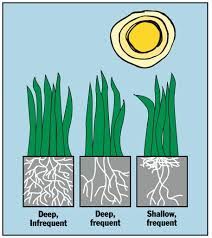StatePoint
No longer must you choose between your lawn and saving water. Experts say there are ways to save both water and money that won't hurt your turf.
"We often see sprinklers watering sidewalks and drives, running during rain, or sending water down the drain from leaky heads," says Josh Friell, Ph. D, senior agronomist of The Toro Company's Center for Advanced Turf Technology. "The good news is there are simple, cost-effective actions homeowners can take to save up to 30 percent in outdoor water usage alone."
Friell recommends these lawn-care watering tips:
When to water
Experts suggest watering deeply and infrequently. This helps wet the entire root zone and encourages deeper root growth, which helps the lawn better tolerate mild to moderate drought. It is best to water in the early morning around 4 to 5 a.m., as this gives lawns time to absorb the moisture and prevents evaporation due to daytime heat.
First things first
Most timed sprinklers water in the early morning, without homeowner attention. Run each zone briefly during daylight hours to see how the system is operating. Look for broken lines or damaged sprinkler heads, and inspect spray patterns to ensure water isn’t wasted.
How much to water
During summer, your grass should receive between 1 to 1 1/2 inches of water weekly, including natural precipitation. Water requirements vary by turf variety, local weather conditions, and site conditions such as shade. Your local university extension office can be a good source of information to assist in understanding local conditions.
The total water applied can be determined by placing a rain gauge or empty tuna cans around your yard prior to an irrigation cycle. Another option is to install a wireless soil moisture sensor, like the Toro Precision Soil Sensor, which fits almost any controller and installs in minutes. This helps eliminate guesswork by continuously monitoring soil moisture levels to prevent the system from overwatering.
Limit water intake
Friell says a general rule to keep in mind is that turfgrass does better when managed on the dry side rather than wet. When soil is constantly wet, grass roots are deprived of oxygen and may become more susceptible to disease.
When in drought
Avoid lawn mowing during heat and drought. Lawns under such stress have limited ability to recover from mowing and can be damaged even more. Instead, mow after a rainfall or irrigation day. Finally, maintaining higher mowing heights will help turf tolerate the heat and drought of summer. Doing so also requires less frequent mowing, which means more time to enjoy your lawn!
With the right watering techniques, you can save water, money and time while maintaining a healthy lawn.
